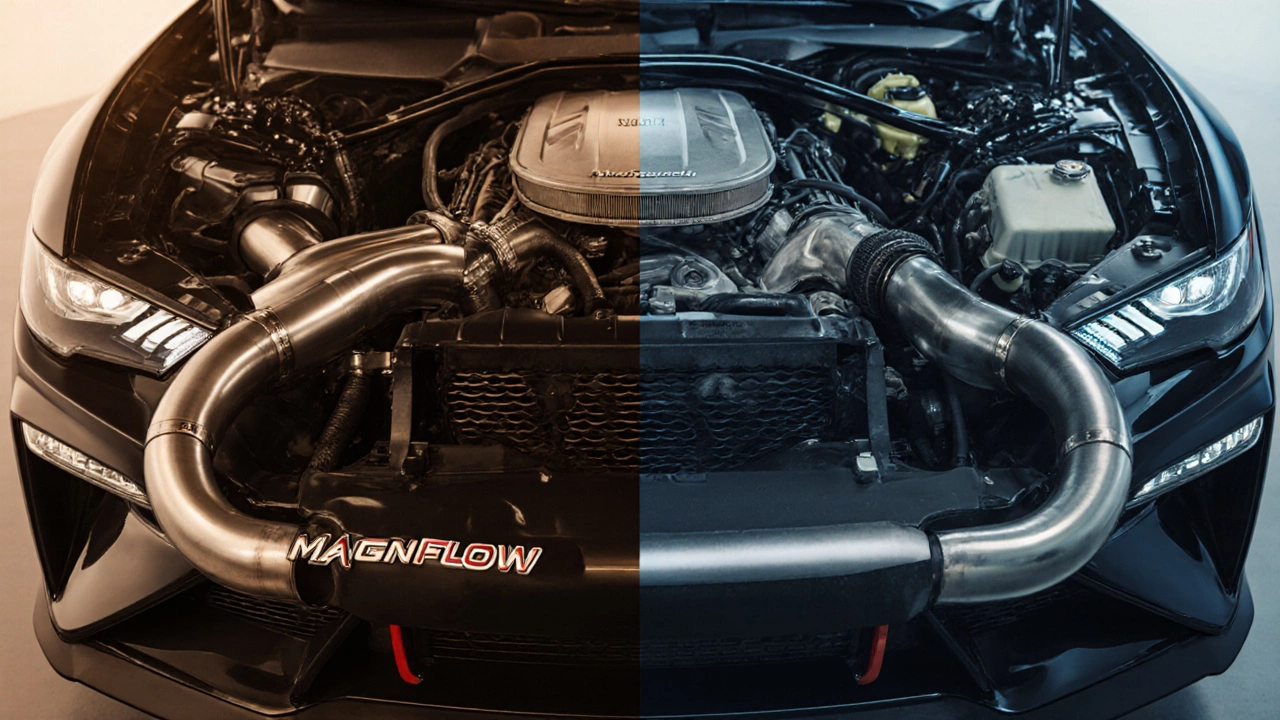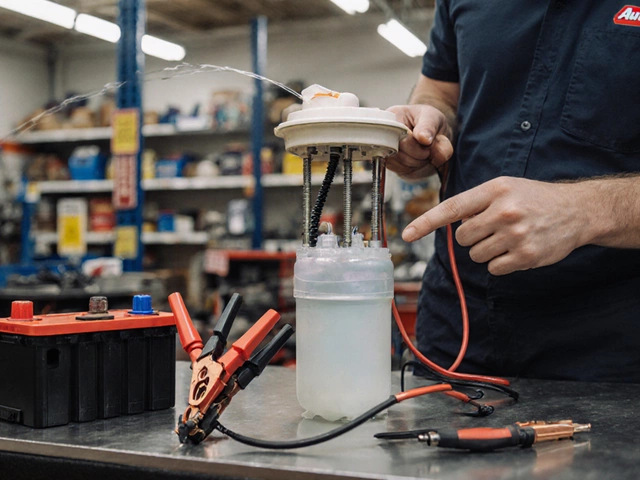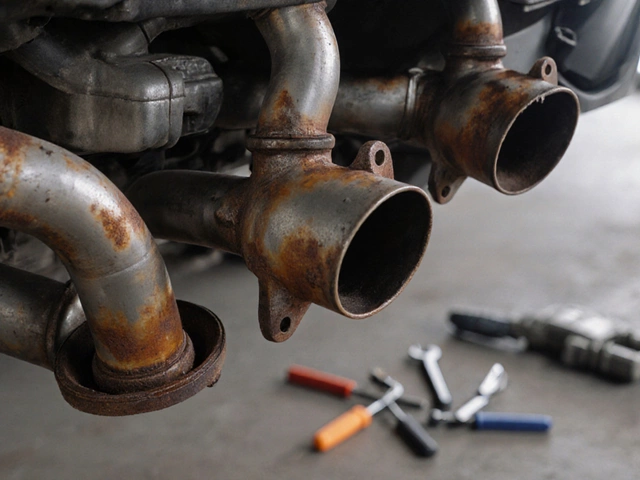MagnaFlow vs Flowmaster: Which Exhaust Wins?
When weighing MagnaFlow vs Flowmaster, the head-to-head matchup of two popular aftermarket exhaust brands, you’re really looking at how each brand tackles flow, sound, and durability. Also known as MagnaFlow and Flowmaster comparison, it helps car fans decide which pipe fits their ride.
The exhaust system, the network of pipes, mufflers, and resonators that channels engine gases out of the car is the playground where both brands compete. MagnaFlow typically opts for a straight‑through design that maximizes horsepower, the engine’s power output measured in hp, while Flowmaster often adds internal baffling to shape the tone. This means if you chase peak power, MagnaFlow’s flow‑focused approach can add 5‑10 % more hp in many street cars. On the flip side, Flowmaster’s sound‑tuned chambers give a deeper growl that many enthusiasts love. So the choice boils down to whether you prioritize raw performance or characterful acoustics.
Sound is another deciding factor. The sound level, the decibel rating of the exhaust note as heard from the driver’s seat of a MagnaFlow typically lands around 70‑75 dB, which feels loud but controlled. Flowmaster models often hit 78‑84 dB, delivering that classic “rattling” feel. Because both brands meet federal emissions standards, you won’t sacrifice legality for volume—just be aware of local noise ordinances. If you need a quieter daily driver, MagnaFlow’s smoother tone may keep you under the limit; if you crave that track‑day roar, Flowmaster’s aggressive tuning will hit the spot.
Materials, Durability and Build Quality
Both manufacturers claim long‑lasting construction, but they take different paths. MagnaFlow tubes are usually made from T‑304 stainless steel with a high‑temperature coating that resists rust even in salty coastal climates. Flowmaster often uses aluminized steel for lower‑cost models and upgrades to stainless on premium lines. The material choice directly influences how long the pipe lasts and how it ages visually. If you live in a wet region, MagnaFlow’s corrosion‑resistant alloy may save you years of replacement hassles. Conversely, if you’re on a budget and plan to swap the exhaust every few years, Flowmaster’s aluminized options can be a practical entry point.
Beyond raw material, each brand backs its products with different warranty terms. MagnaFlow typically offers a 5‑year limited warranty that covers cracks, holes and finish defects, signaling confidence in the pipe’s endurance. Flowmaster’s warranty usually runs 2‑3 years, with some premium lines matching MagnaFlow’s coverage. When you compare warranty length, you see a clear semantic link: longer warranty → higher perceived durability → greater long‑term value. This connection helps you weigh upfront cost against future maintenance savings.
Installation is another practical piece of the puzzle. Both brands design their cat‑back kits to bolt onto a stock mid‑pipe, but the fit can vary by vehicle make and model. MagnaFlow often provides a universal flange that adapts to many cars, while Flowmaster offers model‑specific brackets that can reduce the need for extra hardware. If you’re comfortable with a few hand tools, both systems are DIY‑friendly; however, Flowmaster’s precise fit may shave off installation time, whereas MagnaFlow’s flexibility sometimes requires minor trimming. The trade‑off between ease of install and universal compatibility is a key factor for first‑time modifiers.
Cost is the final piece that ties everything together. A typical MagnaFlow cat‑back system for a daily driver sits between $300 and $500, reflecting the stainless steel and longer warranty. Flowmaster’s comparable kits range from $250 to $450, with the cheaper options using aluminized steel. When you add up material, warranty, sound preference and power gains, you can build a decision matrix that points to the brand that aligns with your goals. In many cases, owners report that the extra $50‑$100 on a MagnaFlow pipe pays off in longevity, while a Flowmaster enthusiast may argue that the richer tone justifies the slight power loss.
Whether you’re swapping a cat‑back pipe, building a full race exhaust, or simply fine‑tuning a street ride, understanding how these two brands treat flow, power, and sound will save you time and money. MagnaFlow vs Flowmaster isn’t just a brand showdown; it’s a roadmap to matching the right exhaust to your driving goals. Below you’ll find hands‑on guides, cost breakdowns, and real‑world performance data to help you pick the perfect system for your car.

MagnaFlow vs Flowmaster: Which Exhaust Brand Wins?
Compare MagnaFlow and Flowmaster exhausts on performance, sound, durability, price, and installation to decide which suits your car best.
CONTINUE READING







